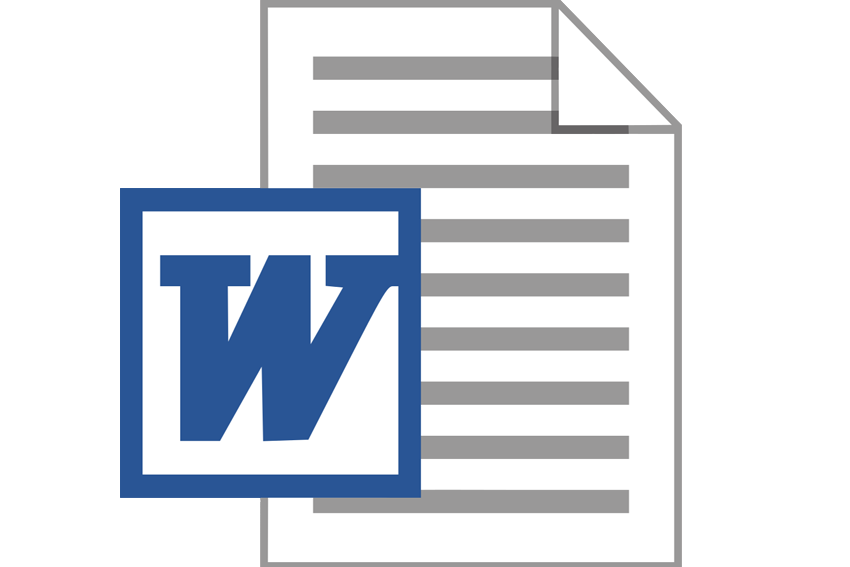INSTRUCTIONS:
Also, I need 13 sources. If this is a problem, let me know and ill change my order “Use the macroeconomic tools surveyed in ECON 202 to explain the Great Depression of the 1930s, and comment on the extent to which this historical episode is relevant (if at all) for modern policy makers”. also, the comments on modern policy makers should be 2-3 pages. ill attach the notes from my class. the diagrams are not in there though Suggested readings (You should note that you are not required to consult all of these references, and, indeed, I suggest that you read at length only those references with which you feel comfortable. You are also expected to discover additional references. I will post additional references on blackboard). Anderson, B. and Butkiewicz, J. 2001. “Money, Spending and the Great Depression” Southern Economic Journal. 47 (2) 388-403. Anonymous. 1998. “A Refresher on the 1930s”. The Economist. September 19. p 94. [A conservative`s interpretation of the Great Depression] Bernanke, B. S. 1983. “Non-monetary Effects of the Financial Crisis in the Propagation of the Great Depression”. American Economic Review. 73. 257-6. Bolch, B. 2001. “The Great Depression: Delayed Recovery and Economic Change in America, 1929-1939”. Southern Economic Journal. 55 (4) 1058-9. Brown, E. C. 1956. “Fiscal Policy in the Thirties: A Re-appraisal”. American Economic Review. 46 857-879. Blanchard, O. and Sheen, J. 2004. Macroeconomics. Australian Edition. Prentice Hall. Chapter 22. Calomiris, C.W. 1993. “Financial Factors in the Great Depression”. Journal of Economic Perspectives. 7(2). pp 61-85. Christiano, L. Motto, R. and Rostagno M. 2004. “The Great Depression and the Fiedman Schwartz Hypothesis”. Frankfurt. European Central Bank. Cecchetti, S. 1992. “Prices During the Great Depression: Was the Deflation From the 1930-2 Really Unanticipated”. American Economic Review. 82 (1) 142. Cecchetti, S. 1997. “Understanding the Great Depression: Lessons for Current Policy”. National Bureau of Economics Research. pp 1-26. Christiano, L. Motto, R. 2004 “The Great Depression and the Friedman-Schwartz Hypothesis”. Society for Computational Economics. 169. Cole, H. and Ohanian, L. E. 1999. “The Great Depression and the United States from a Neoclassical Perspective”. Federal Reserve Bank of Minneapolis Quarterly Review. 23 (Winter) pp 2-24. Cole, H. and Ohanian, L. E. 2002. “The U.S. and U.K. Great Depression Through the Lens of Neoclassical Growth Theory.” American Economic Review. 92 (2) 28-32. Cooper, R and Corbae, D. 2002. “Financial Collapse from the Great Depression”. Journal of Economic Theory. 107. pp 159-190. Darby, M. 1976. “Three and a Half Million U.S. Employees have Been Mislaid, or an Explanation of Unemployment, 1934-1941”. Journal of Political Economy. 1. pp 1-16. Dimand, R, W. 2005. “Fisher, Keynes and the Corridor of Stability”. American Journal of Economics and Sociology. 64 (1) 185-199. Fackler, J. S. and Parker, R.E. 1994. “Accounting For the Great Depression: A Historical Decomposition” Journal of Macroeconomics. 16 (2). pp 193-220. Fisher, I. 1933. “The Debt Deflation Theory of Great Depressions”. Econometrica. 1 (4). Pp 337-357. Friedman, M and R. 1980. Friedman. Free to Choose. Macmillan. Melbourne. Chapter 3. (NB This book has many editions and any edition will do). Chapter 3. Friedman, M. and A.J. Schwartz, 1962. A Monetary History of United States. Princeton University Press. Princeton. Chapter 7. Galbraith, J.K. 1954. The Great Crash 1929. Houghton Miffen Company. Boston. (NB This book has many editions and any edition will do). Gordon, R.J. 1987. Macroeconomics. 4th edition. (NB Very nearly all of this text is relevant, but 7.3 is specifically on the Great Depression). Formani, R. 2005. “Did the Fed Cause the Great Depression”. Liberty. 19 (3). (See web-site). Greasley, D. Madson J. D. and Oxley, L. 2001. “Income Uncertainty and Consumer spending During the Great Depression”. Explorations in Economic History. 38. pp 225-251. Hamilton, J. D. 1987. “Monetary Factors in the Great Depression”. Journal of Monetary Economics. 13 pp 1-25. Koppl, R. 1991. “Retrospective: Animal Spirits”. Journal of Economic Perspectives. 5 (3) 203-210. Krugman, P. 1999. “The Return of Depression Economics”. Foreign Affairs. 78. pp 56-74. Mankiw, N.G.2003. Macroeconomics. Worth Publishers. (NB Very nearly all of this text is relevant, but 11.3 is specifically on the Great Depression). Margo, R.A. 1993. “Employment and Unemployment in the 1930s”.Journal of Economic Perspectives. 7(2). pp 41-59. Metzler, A. 1981. “Keynes` General Theory: A different Perspective”. Journal of Economic Literature. pp 34-64. Minsky, H. P. 2001. “Did Monetary Forces Cause the Great depression?”. Challenge. 44-66. Robert, P. C. and Stratton, L. M. 2001. “The Fed`s Depression and the Birth of the New Deal”. Policy Review. 108 pp 19-33. Romer, C. D. 1990. “The Great Crash and the Onset of the Great Depression”. Quarterly Journal of Economic Perspectives. 105 (3), pp 597-624. Romer, C.D. 1993. “The Nation in Depression”. Journal of Economic Perspectives. 7(2). pp 19-39. Romer, C. D. and Romer D. H. 1989. “Does the Policy Matter? A New Test in the Spirit of Friedman and Schwartz”. NBER Macroeconomic Annual. 4 pp 121-170. Renshaw, P. 1999. “Was there a Keynesian Economy in the USA between 1933 and 1945”. Journal of Contemporary History. 34 337-364 Samuelson, R. J. 2001. “Ghosts of Booms Past”. The Washington Post. p 23. Samuelson, R. J. 2003. “The Bogeyman of Deflation”. Newsweek. 19 May. p 42. Snowden, B and H. R. Vane. 2005. Modern Macroeconomics. Its Origins. Development and Current State. Edward Elgar. Chapters 2 & 3 Temin, P. 1989. Lessons from the Great Depression. MIT Press. Cambridge, Mass. Temin, P. 1993. “Transmission of the Great Depression”. Journal of Economic Perspectives. 7(2). pp 87-102. Temin, P. 1990. “Socialism and Wages in the Recovery From the Great Depression in the United States and Germany”. Journal of Economic History. 50 (2) 297-307. Trescott, P. 1992. “The Failure of the Bank of the U.,S. 1930”. Money Credit and Banking. 24 (3) 384-5. Wallis, J.J. “Employment, Politics and Economic Recovery during the Great Depression”. The Review of Economics and Statistics. 69. pp 516-520. Whicker, E. 1980. “A Reconsideration of the Causes of ther Banking Panic of 1930”. Journal of Economic History. 40 (3) 571-583. White, E. N. 1990. “The Stock Market Boom and Crash of 1929 Revisited”. Journal of Economic Perspectives. 4(2). pp Yes Simon 2011-10-01
CONTENT:
Running head: Business and MarketingMacroeconomic tools explaining the Great Depression of the 1930sUniversity:Name:Course:Tutor:Date: Macroeconomic tools explaining the Great Depression of the 1930sThe Great Depression is considered as the deepest, longest and most severe economic depression that hit the Western countries from 1929 to 1939. The effects were experienced across the world and it one of the worst economic calamities in the world`s history. In the depressions that had occurred previously like in the 1870s and 1890s, the real per capita gross domestic product (GDP) managed to return to their former levels within a span of five years (Christiano & Motto, 2004). However, the real per capita GDP in the 1930`s Great Depression was still lower than its 1929 level even after a period of ten years. This document will use macroeconomic tools to explain the Great Depression of the 1930s and the relevance of the episode to modern policy makers. Episodes in the Great depressionBefore the 1930s, a huge percentage of economic analysis was limited to microeconomics. Even in his book “The Wealth of Nations”, Adam Smith argued that the government should not interfere with market forces and customers should be allowed to make their individual choices (Galbraith, 2009). However, the 1930s Great Depression acted as a turning point prompting economists to analyze factors behind unemployment, money supply and other macroeconomic factors affecting the economy. In the 1920s, there was a boom in the U.S. stock market due to general optimism among economists and businessmen (Blanchard & Sheen, 2004). They firmly believed that the newly established Federal Reserve would lead to economic stabilization and that the upward trend in technological innovation will enhance the expanding markets and the rising standards of living. However, initial recession was brought by attempts by the U.S. Federal Reserve to raise interest rates in 1928 and 1929 so as to discourage stock speculation. �G-7 GDP in the Great Depression (Galbraith, 2009)This caught most businesses and firms by surprise, creating a contagious effect that negatively impacted the whole economy. For instance, businesses cut down the plans they had made on further purchase of producer durable goods. On the other hand, companies which dealt in producer durables reduced their production capacities. Consumers who had lost their jobs as well as those who feared they would be retrenched reduced their purchases of consumer durables. Lastly, businesses which produced consumer durables were exposed to declining demand due to the actions of consumers (Galbraith, 2009). During the Great Depression, decline in prices, leading to deflation, initiated contraction effects in production which in turn led to addition decline in commodity prices. During this time, the rate of decline in prices was 10% per annum, and calculations made by investors revealed that less profit would be earned if investments were done this...

 Macroeconomic tools explaining the Great Depression of the 1930s
Macroeconomic tools explaining the Great Depression of the 1930s